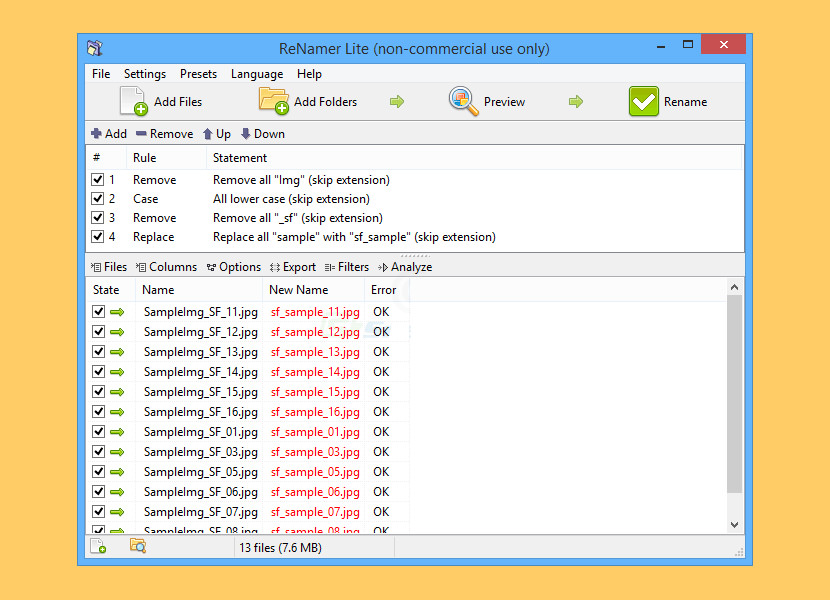

For example, after discovering this tool I created a script which, when prompted, quickly grabs a screenshot and save it as a jpeg in a folder I specified.įor this post, let’s step through using the tool to batch re-name files. The tool allows you to define a group of actions to take, automatically, on a given set of triggers.
#Batch file rename folder mac os x
One of the features included in Mac OS X (10.4 and above) is Automator, the “personal automation assistant”, according to Apple Support. Beijing-OlympicStadium-01.jpg Mac Automator The images are of the Olympic Stadium in Beijing, China, and I would like the file names to reflect that, i.e. The files originated on a faculty member’s camera, so the names are in the following format: DSCN2956.jpg In my example, I am using a set of 43 images waiting for upload to our digital library. Lastly, while Photoshop and other photo editing software may help with this when working with image files, the options listed below should work with all file types. I also tried to avoid any third-party tools specifically touted as renaming applications, as I have not used them and therefore cannot recommend which is best. There are some caveats: if you are an experienced developer, it’s likely that you know a more efficient way. The first two methods do not require any knowledge of coding the last is slightly more advanced. Batch File with a Loop in Windows – create a batch file which loops through the files and executes rename commands.Column Editor for Notepad++ in Windows – edit a list of rename commands, then run in a batch.
#Batch file rename folder for mac os x
Automator for Mac OS X – a built-in tool which aids in building scripts for this type of task.In this post, I’ll review a few easy methods for batch renaming files: Renaming existing files to bring them in line with our standards is often a daunting prospect, but there are lots of methods available to save time and sanity. Donors bring hard drives and students bring USB drives and files get migrated…etc, etc. However, as librarians and archivists, we don’t always create the files we manage. In my last post, I discussed file naming conventions and the best methods to ensure future access and use for files. Then finally a colleague said to me, and rightly so, “Are you crazy? There’s scripts to do that for you.” For me, this once meant manually renaming hundreds of files and moving them into individual folders in preparation for upload to a digital repository. Everyone occasionally dives right into a problem without researching (gasp!) the best solution.


 0 kommentar(er)
0 kommentar(er)
